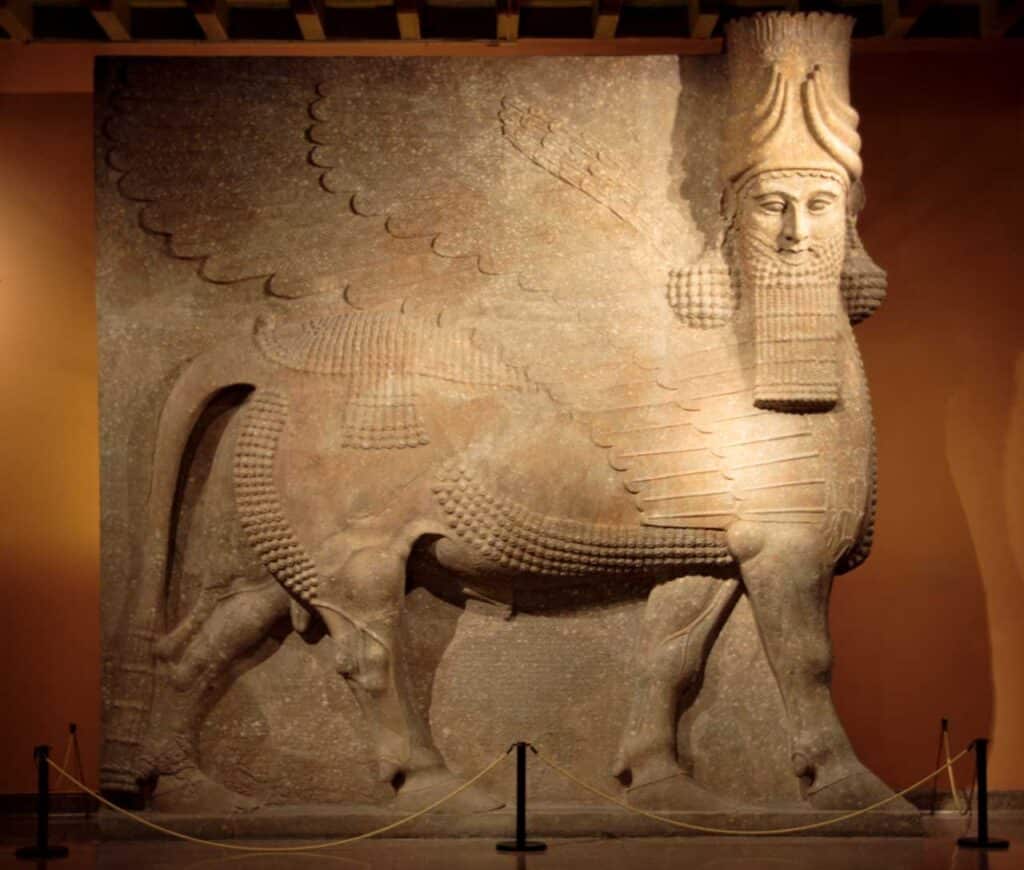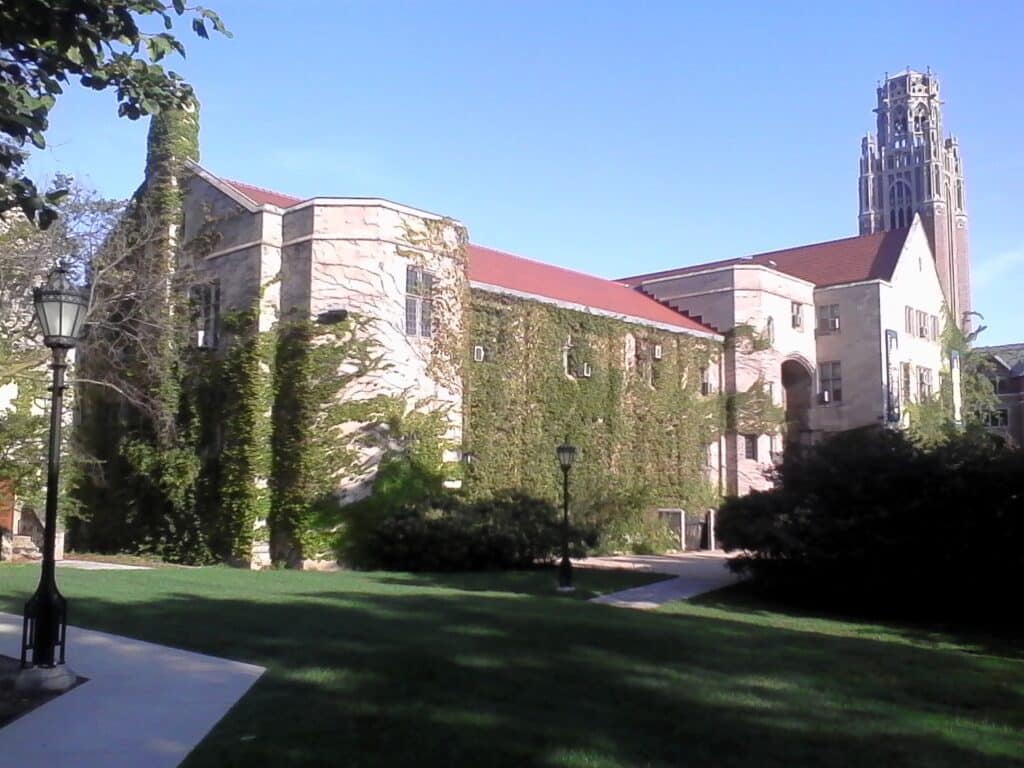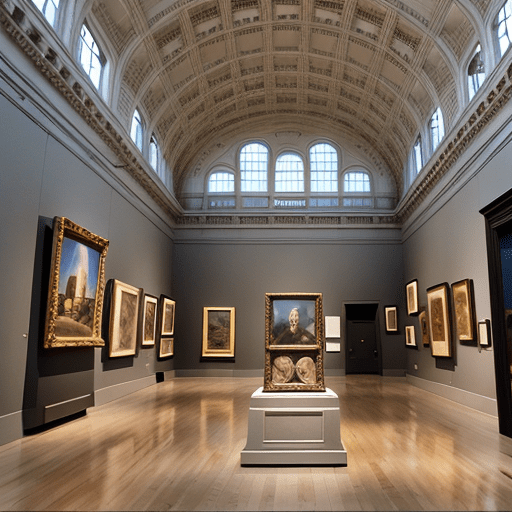Exploring Ancient Cultures at the Oriental Institute Museum (ISAC) in Chicago
The Oriental Institute Museum, rebranded as the Institute for the Study of Ancient Cultures (ISAC), is a cornerstone in the exploration of ancient civilizations. Located at the heart of the University of Chicago, this museum is not just a trove of about 350,000 artifacts excavated by its archaeologists but also a leading center for research on the ancient Near East. Its collections, encompassing Egypt, Nubia, Persia, Mesopotamia, Syria, Anatolia, and the Levant, provide a comprehensive glimpse into the evolution of human societies.
As a beacon of knowledge since its establishment in 1919 by James Henry Breasted, the museum, now known as the ISAC Museum, continues to enlighten visitors with its extensive exhibitions and commitment to educating the public on the dawn of human civilization. Through its endeavors in research, public engagement, and education, it remains at the forefront of ancient studies, making the Chicago Oriental Institute a must-visit destination for anyone interested in the depths of our collective past.

The Transformation of ISAC
The Oriental Institute Museum’s transformation into the Institute for the Study of Ancient Cultures (ISAC) is marked by significant milestones that showcase its commitment to advancing the study of ancient civilizations through innovative technologies and scholarly research. Here’s a look at the key aspects of ISAC’s evolution:
- Logo and Leadership:
- The museum’s new logo, featuring a lotus flower, symbolizes its deep connections to ancient Assyrian, Mesopotamian, and Egyptian art, mirroring the architectural elements found on the ISAC building itself.
- Leadership at ISAC has seen a remarkable lineage of directors since its inception, including pioneers like James Henry Breasted and contemporary scholars such as Timothy P. Harrison, each contributing to the institute’s legacy and vision.
- Technological Pioneering in Archaeology:
- Early Adoption of Technology: From using aerial photography in 1920 to integrating computers for data management in the 1960s, ISAC has been at the forefront of employing technology in archaeology.
- Innovations and Contributions:
- Development of radiocarbon dating, with ISAC providing one-third of the original samples.
- Introduction of personal computers in 1979 and the use of a computer in the field at Nippur in 1981.
- Utilization of satellite images and remote sensing techniques since the late 1970s to enhance archaeological research.
- Research and Excavation Breakthroughs:
- Endowment and Projects:
- Establishment of a Technology endowment to support cutting-edge research as part of its Endowment Campaign.
- Projects like the Center for the Ancient Middle Eastern Landscape (CAMEL) and the NSF-funded program to Model Ancient Settlement Systems (MASS) are pioneering new methodologies in technology and archaeology.
- Significant Discoveries:
- Use of aerial photography and computer modeling at the Eastern Badia Archaeological Project revealed more about the Late Neolithic period constructions.
- Investigations at Kom ed-Dahab using kite aerial photography and geomagnetic survey confirmed the presence of a Roman theater, shedding light on its construction and materials.
- Endowment and Projects:
These advancements and initiatives underscore ISAC’s dedication to exploring the ancient world through a modern lens, continuing to enrich our understanding of human history and civilization.
Key Collections and Exhibits
At the heart of the Oriental Institute Museum, now known as the Institute for the Study of Ancient Cultures (ISAC), lies a treasure trove of artifacts that span across various ancient civilizations. With approximately 350,000 artifacts, most of which have been excavated by the museum’s archaeologists, visitors are invited to explore the rich tapestry of human history through its key collections and exhibits.
Key Collections:
- Achaemenid Period Objects: Boasting over 2,600 items from territories under Achaemenid rule, this collection offers a unique glimpse into the vast empire that stretched from Anatolia and Egypt across western Asia to the Indus Valley.
- Ancient Civilizations: The museum’s galleries are dedicated to civilizations such as Egypt, Nubia, Persia, Mesopotamia, Syria, Anatolia, and the Levant. Each gallery provides insights into the ancient past, showcasing the diversity and richness of human cultures.
- Special Exhibits: Visitors can engage with special exhibitions like ‘Back to School in Babylonia’ and ‘Artifacts Also Die’, which offer thematic explorations of ancient life and the impermanence of material culture.

Notable Artifacts:
- Among the museum’s significant discoveries are:
- A Lamassu from the Assyrian royal city of Khorsabad, dating back to the 8th Century B.C.
- A colossal head of a bull carved in black stone from Persepolis, symbolizing the grandeur of the Achaemenid Empire.
- Objects of everyday life and luxury, including a tiny piece of the Dead Sea Scrolls and the earliest known fragment of “A Thousand and One Nights”.
Educational Endeavors:
- The ISAC Museum is not just about displaying artifacts; it’s also a center for education and engagement. Through special exhibits, courses, workshops, and hands-on events, the museum connects visitors with the ancient world in an interactive manner. For instance, the exhibit ‘Treasures from the Royal Tombs of Ur’ was complemented by a range of activities including an adult education course on ancient Sumer, studio workshops, and lectures that deepened the understanding of ancient Mesopotamian civilizations.
The Oriental Institute Museum, through its diverse collections and innovative exhibits, invites visitors to embark on a journey through time, offering a window into the ancient world that is both educational and inspiring. Its commitment to preserving and interpreting the past ensures that these ancient cultures continue to enlighten and fascinate future generations.
Research and Scholarship Endeavors
The University of Chicago’s Institute for the Study of Ancient Cultures (ISAC) stands as a beacon in the realm of archaeological and historical research, with efforts spanning across the ancient Near East. This includes regions rich in history such as Egypt/Nubia, Mesopotamia/Syria, and Anatolia, among others. The institute’s commitment to uncovering the past is evident through its wide array of research projects, both on-site in these ancient lands and within the confines of Chicago itself. Key areas of focus include:
- Diverse Research Projects:
- Overseas: Conducting fieldwork in areas like the Nile Valley and parts of the Ottoman Empire, ISAC’s research encompasses excavations, environmental studies, and regional surveys.
- In Chicago: The institute also undertakes scholarly projects closer to home, developing comprehensive dictionaries and lexicons for ancient languages such as Akkadian, Hittite, and Sumerian.
- Interdisciplinary Approach:
- ISAC’s research projects are notable for their interdisciplinary nature, involving specialists in fields ranging from archaeozoology to remote sensing. This collaborative approach ensures a holistic understanding of ancient civilizations.
- Key Research Initiatives and Resources:
- Oriental Institute Collections Research Grant: This initiative supports scholars studying the museum’s vast collections and related archival documents, furthering academic knowledge.
- Sponsored Projects: Among its many contributions, ISAC has been instrumental in projects like the Chicago Assyrian Dictionary and the Epigraphic Survey, which have significantly advanced the field of ancient studies.
- Innovations in Methodology: The institute is at the forefront of developing new methodologies for field research, notably through the advanced remote sensing techniques pioneered by the CAMEL laboratory.
The ISAC Museum not only preserves invaluable collections but also serves as a hub for educational and scholarly activities. Through exhibits, programs, and publications, it engages both the general public and the academic community, fostering a deeper appreciation for ancient cultures. A notable future endeavor is the installation of an Integrated Database system, which promises to revolutionize access to and research on the museum’s collections by linking various records, documents, and images. This initiative underscores ISAC’s ongoing commitment to enhancing the study and understanding of ancient civilizations, ensuring that these rich histories remain accessible and intriguing for future generations.
Public Engagement and Educational Programs
The Oriental Institute Museum’s dedication to public engagement and educational programs is evident through its wide array of offerings that cater to diverse audiences. Here’s a closer look at how the museum connects with the community:
- Diverse Programming for All Ages:
- Adults, Children, and Families: The museum attracted 5,689 individuals with programs ranging from concerts to seminars, showcasing its commitment to educational diversity.
- Online Engagement: With over 750,000 online visitors, the museum extends its educational services to a global audience through web-based resources for teachers, students, and families.
- Innovative Educational Centers and Courses:
- The Kipper Family Archaeology Discovery Center (KADC), developed by Moriah Grooms-Garcia, Kat Silverstein, and Megaera Lorenz, stands as a testament to the museum’s innovative approach to education.
- Distance-learning courses have been introduced, featuring best practices in online education, making ancient studies accessible from anywhere.
- Registration and Participation Insights:
- Free Programs with Registration: Programs are offered free of charge, requiring registration via email at ‘oi-education@uchicago.edu‘ at least one week before the scheduled start date, highlighting the museum’s inclusive approach.
- Growth in Participation: The Education Program witnessed a 14% increase, reaching 7,258 participants in 2002-2003, attributed to the redesign of the Education pages on the Oriental Institute website and the use of computer technology to diversify public programs.
The museum’s efforts to enhance public engagement and educational programs are further supported by the development of a full calendar of student activities for the upcoming year and collaboration with the University’s College Programming Office for ‘Experience Chicago Day’. This initiative invites newly enrolled students to immerse themselves in cultural education during Orientation week, underlining the museum’s role in fostering an appreciation for ancient cultures among the next generation.

The Future of Ancient Studies
In recent years, the Institute for the Study of Ancient Cultures (ISAC), formerly known as the Oriental Institute Museum, has found itself at the center of a significant legal matter that underscores the complex relationship between historical artifacts, their country of origin, and the institutions that hold them. This situation involves a collection of Persian tablets that, while owned by Iran, have been in the possession of the museum. This legal challenge highlights a broader conversation within the field of ancient studies about the stewardship and repatriation of cultural artifacts.
- Legal Background:
- Ownership Dispute: The lawsuit centers on the rightful ownership and future of the Persian tablets, which are of immense historical and cultural value.
- Implications for Museums: This case serves as a pivotal example of the legal and ethical challenges museums face regarding the acquisition and display of ancient artifacts.
The ongoing legal proceedings have not only drawn attention to the specific case of the Persian tablets but have also sparked a wider dialogue on international cultural heritage law. This discourse examines the responsibilities of museums in preserving global heritage while respecting the rights and sentiments of the countries of origin. It emphasizes the need for transparent and ethical practices in the handling of ancient artifacts, ensuring that these treasures of human history are preserved for future generations in a manner that honors their origins and stories.
- Future Considerations:
- Ethical Stewardship: Museums, including ISAC, are increasingly focusing on ethical stewardship, which includes due diligence in provenance research and openness to repatriation claims.
- Collaborative Efforts: There is a growing trend towards collaboration between museums and countries of origin to facilitate cultural exchanges and loans, rather than permanent acquisitions.
This case underscores the importance of navigating the delicate balance between preserving ancient cultures and respecting the modern-day sovereignties from which these artifacts originate. As ISAC and similar institutions look to the future, the focus is not only on the advancement of archaeological research and education but also on fostering global cooperation and understanding in the stewardship of our shared human heritage.
With its rich collections, groundbreaking research, and innovative public engagement programs, ISAC stands as a testament to the enduring allure and complexity of ancient civilizations. The Institute not only facilitates a deeper understanding of the past but also bridges historical knowledge with modern technological advances, ensuring that these ancient narratives continue to resonate in our contemporary world.
Looking forward, the challenges and conversations surrounding the legal and ethical dimensions of artifact stewardship underscore a pivotal era for ISAC and similar institutions globally. As they navigate the intricacies of cultural heritage and its implications, the commitment to ethical stewardship, collaborative research, and educational outreach remains paramount. By honoring the past and embracing the future, institutions like the ISAC are poised to continue enlightening us about our collective human story, fostering a deeper appreciation for the civilizations that have shaped our world.
FAQs
What are the admission fees for the Oriental Institute Museum? The Oriental Institute Museum has a suggested admission fee, which is $10 for adults and $5 for children aged 12 and under. This fee is payable at the museum entrance.
What does the study of ancient cultures encompass? The study of ancient cultures, known as archaeology, involves examining the human past through material remains. These remains include any objects that people have created, altered, or utilized. Archaeologists meticulously excavate and analyze these objects with the aim of understanding the lives and activities of people and civilizations from different historical periods.
You can find more information on the Institute’s web page right here.


